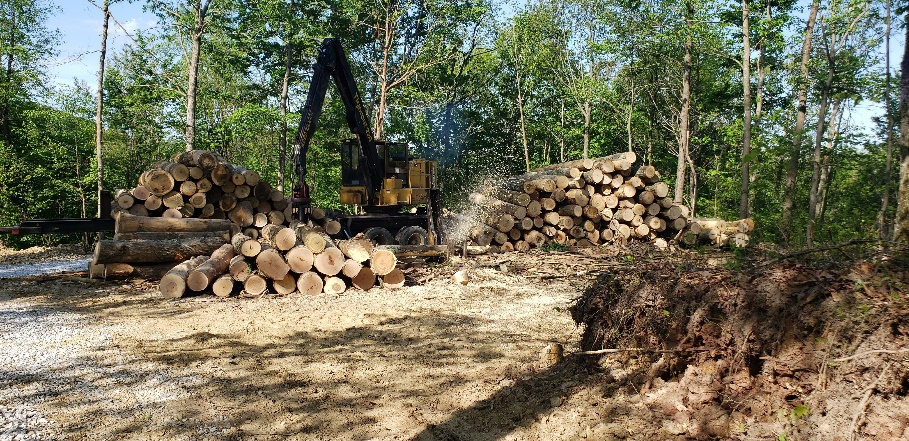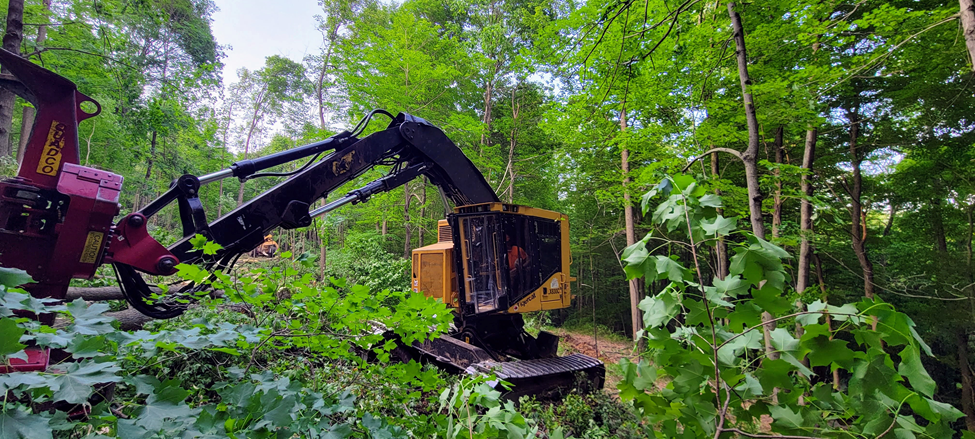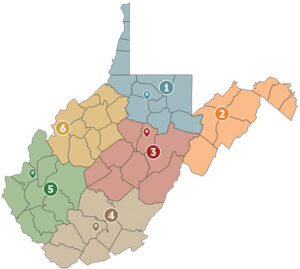Forestry operations play a crucial role in managing our natural resources. One critical aspect is understanding the time it takes to harvest timber. With a good estimate of harvesting time, both resource managers, landowners, and regulators improve their planning processes, work toward minimizing environmental and wildlife impacts, and improve overall sustainability. In this project, we investigated the duration of timber harvesting operations in West Virginia (WV), explore some of the factors that might influence it, and discuss the implications and opportunities.


To start, data from the WV Division of Forestry’s Logging Operation Notification, Inspection, and Enforcement (LONIE) system were used to help develop this time estimate. Over a period of ten years (from January 1, 2013, to March 24, 2023), LONIE data covering 20,000 harvesting operations covering a combined area of 1.5 million acres in WV were analyzed.

LONIE stores all the data associated with notification forms the WV Division of Forestry requires timber license holder to submit at the start of every logging operation. This notification includes basic contact information, size and location of operations, silviculture prescription, BMP compliance, and start and finish dates.
To estimate the time required to harvest each unit, the overall harvesting duration was calculated by subtracting the provided start date from the end date.
Almost all large data sets can have some messy entries that can have an impact on the analyses. To minimize these impacts, the data were cleaned to remove notifications from the analysis if they had extremely long durations (over three years), had a duration value of zero days, or had operations with exceptionally high productivity of over five acres per day. This process removed almost 400 operations, resulting in 19,682 operations used in the analysis.
In most cases, the required time to harvest a large 200-acre tract will obviously be longer than the time required to harvest a 10-acre site. Logically, larger harvest units will tend to take longer to complete than smaller ones. To improve the comparisons between different-sized harvest units, we standardized the harvest operations size (acres) by the number of days duration to get an “acres per day” value.
When comparing these values to other areas of the country, it’s crucial to recognize the unique harvesting conditions in WV, which are characterized by hardwood-dominated forests on steep slopes with constructed skid trails. Most harvesting is completed using ground-based manual felling or the use of a feller buncher, a grapple skidder to move logs to the landing, and hydraulic loaders to help process the logs and load trucks on the landing.
Analysis Results
Considering the entire dataset, we found the average time required to complete the average sized harvest unit of 77 acres is 209 days. When these data are standardized based on the acreage, the average harvest will complete 0.54 acres/day.
Further analyses looked at how different variables impacted the average harvest duration based on this standardized acres/day value. The data were compared between regions of the state, by silvicultural harvest type, season of the year starting time, and by timber owner type. The results of these analyses are presented in Table 1.
Discussion
Duration by Region: Using the WV Division of Forestry’s regions, average acres per day was the lowest in Region 1 and the highest in Region 5. Both of these regions were significantly different (p<0.01) from most of the other regions. Regions 2, 3, 4, and 6 did not show a significant difference between each other. While there are differences in topography, timber types, and potentially types of treatments, there is not a clear reason why there is a such a difference between Region 1 and 5.
Duration by Silviculture Treatment: Each silviculture treatment type’s duration was significantly different (p<0.01). While more care and time are typically required to harvest in an uneven-aged treatment unit, the lower total volume of timber to be harvested per acre allows for faster acreage completion. Even-age treatments (clearcutting) take longer to harvest as there are typically more trees to remove per acre, which is confirmed in this analysis with lower acres/day completed.
Duration by Starting Season: Seasonal weather can impact the time required to harvest timber. Specifically wet weather can lead to poor soil conditions, where skidding and felling machines may not be able to work efficiently. Those operations starting in the summer months had a significantly higher (p<0.01) acres/day rate than those that were started in the winter months.
Duration by Timber Owner: If the timber being harvested is owned by a non-industrial forest landowner, the duration of the harvest will be significantly longer (p<0.01) than that of timber that is owned by a timber industry organization. This could be explained by the operational systems and personnel that the industry uses to improve efficiencies and that most non-industrial landowners have less experience and fewer available tools for managing efficient logging operations.
Considerations
So…how can we influence harvesting durations? There are entire research areas that look at improving productivity. The recommendations from these studies often suggest improvements to minimize downtime and improve operational efficiencies. Loggers who better utilize equipment and personnel, decrease costs, and focus harvesting during favorable weather seasons will see improvements to their average acres/day completed.
The data used for this analysis has some limitations that affect the results, like the lack of an estimate for harvested volume. Additionally, other topics are buried in these data and cannot be pulled out such as a potential lag between the actual finish date and end date on notification, dates used are inclusive of non-harvesting activities such as setup and reclamation, markets and quotas requiring shutdowns or slowdown, and finally weather, labor, or other delays where activities are shut down. This analysis is built on actual conditions and adjustments loggers make to adapt to real world conditions, while ensuring that wood is being delivered to mills, BMPs are implemented to protect soil and water, worker safety is maintained, and equipment is maintained for longevity.
Conclusion
This analysis of over 19,000 West Virginia logging operations provides a data-based estimate of the time required to harvest timber. These estimates assist landowners in predicting the duration of operations on their property and enable forest managers and logging contractors to benchmark their processes. By developing systems to enhance efficiency and profitability, the industry can increase the acres harvested daily. These potential improvements can also benefit local communities by reducing disruption to neighbors and minimizing noise and traffic. Overall, improving logging efficiencies contributes to a more sustainable and efficient timber industry.
















